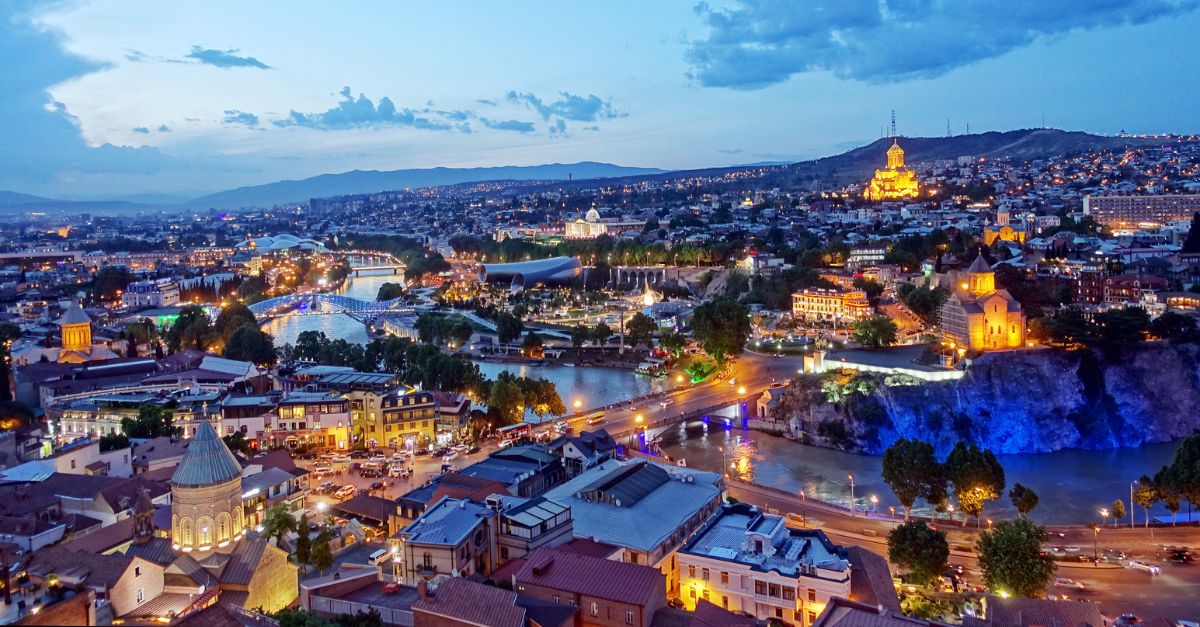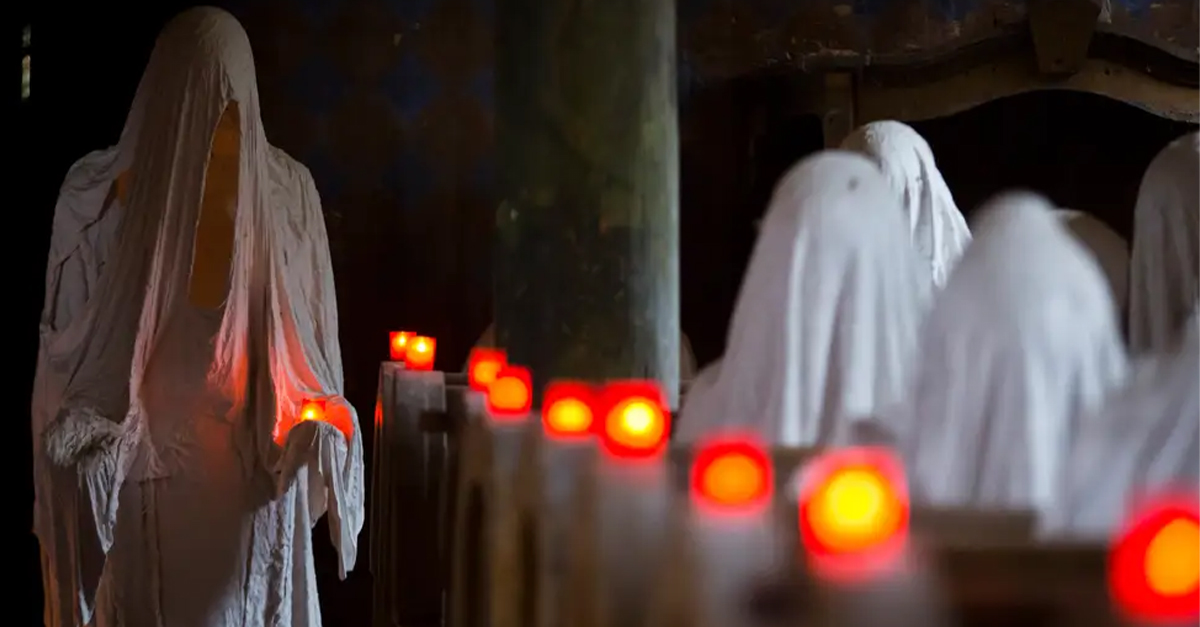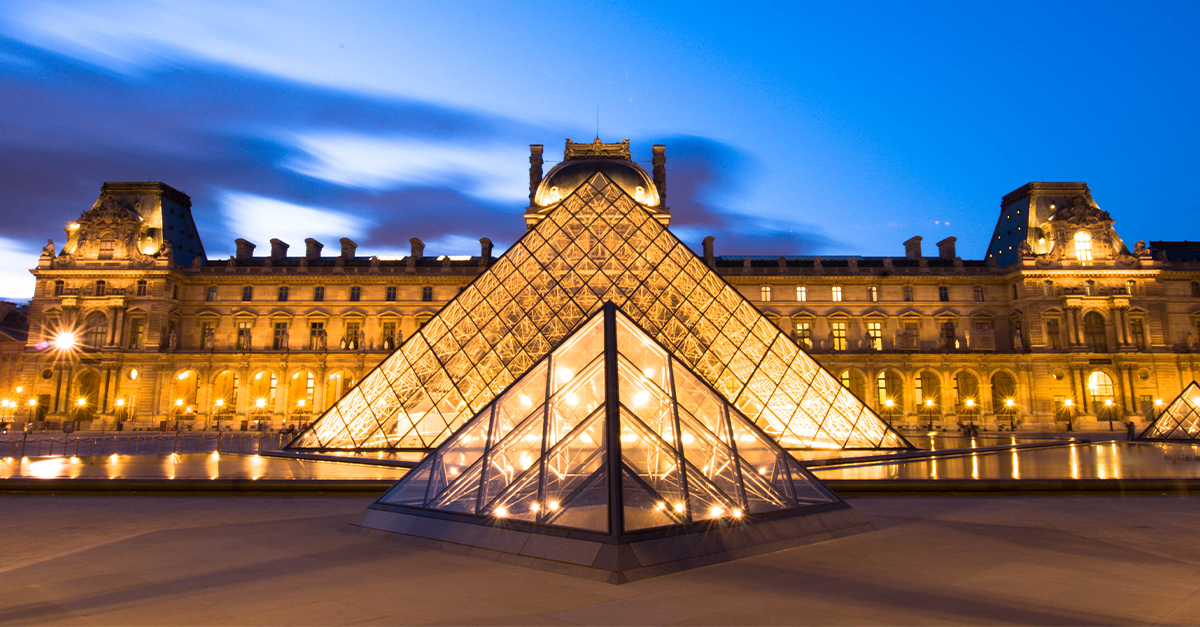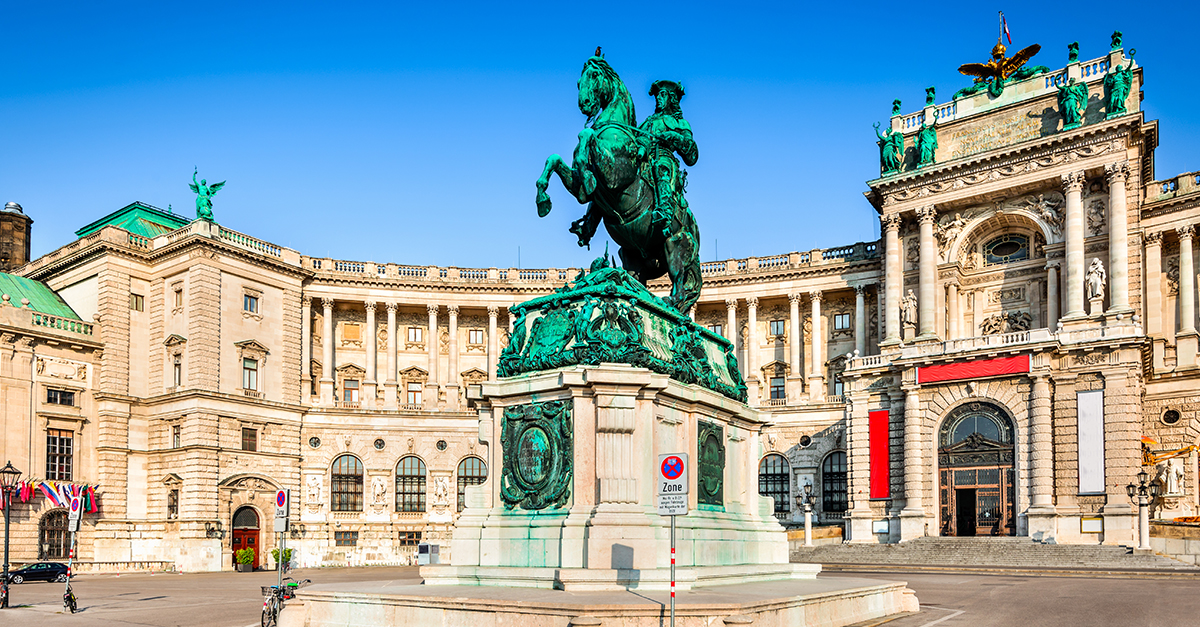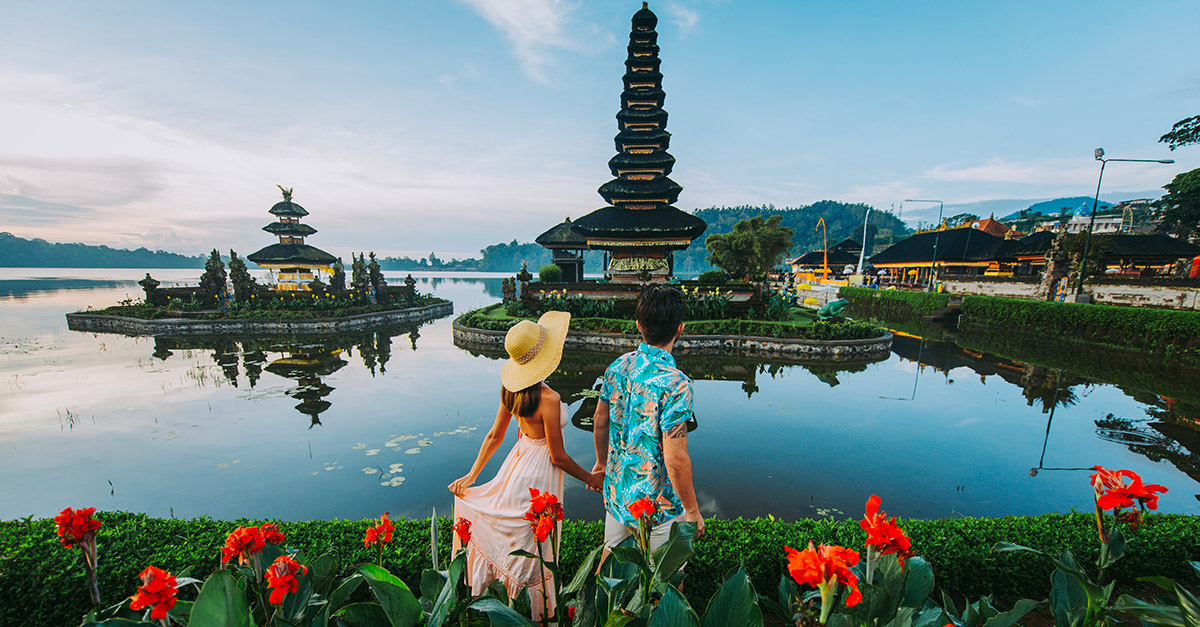Stories Of Their Earliest Dwellers
While some cities barely survived the first century, others have persisted for millennia. Their traditions, food, culture, clothes, and houses tell the stories of their earliest dwellers. Let's find out some of their history.
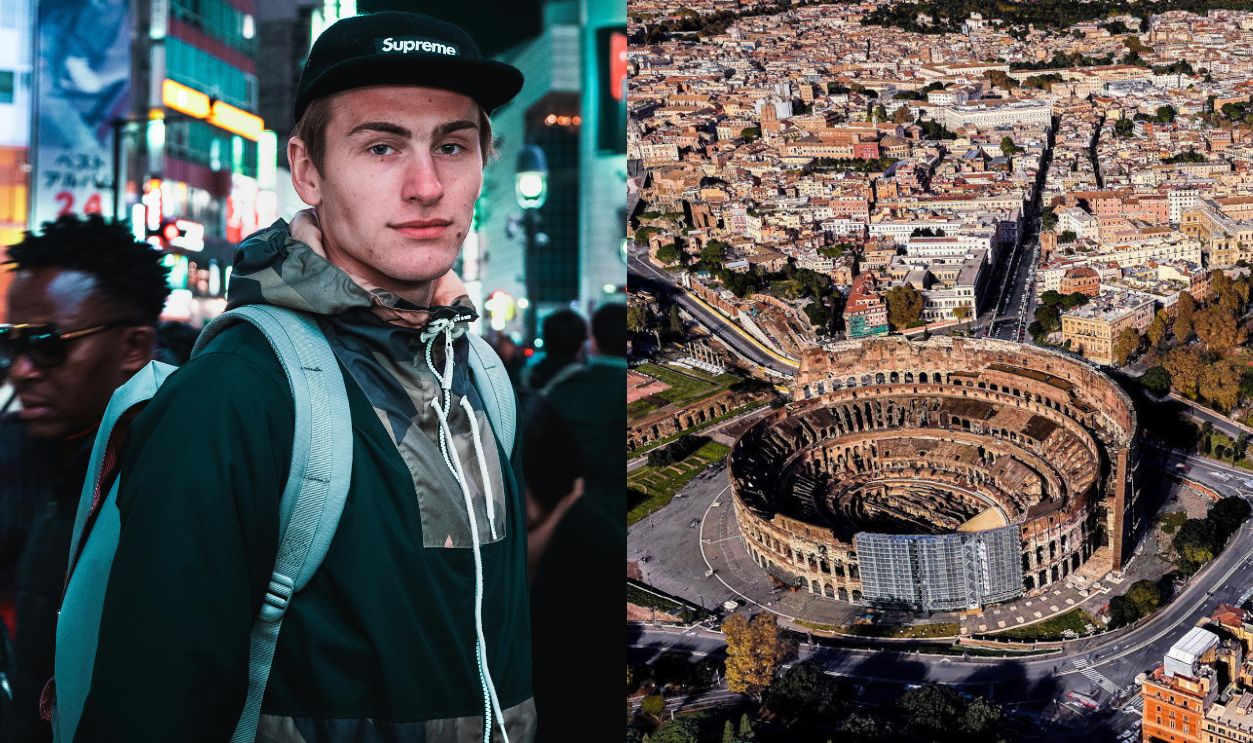
Jericho, Palestine
Jericho was established around 9,000 BCE by the Natufian culture. Located near the Jordan River in Palestine, Jericho is believed to have been one of the first agricultural communities chosen for its fertile land and proximity to natural springs.
 Daniel Case, CC BY-SA 3.0, Wikimedia Commons
Daniel Case, CC BY-SA 3.0, Wikimedia Commons
The City Of Palms
Often referred to as the City of Palms, Jericho's fame grew from its mention in the Bible, particularly in the story of Joshua and the city's legendary walls. Over time, it has become a central place for pilgrims and historians, with layers of artifacts dating back thousands of years.
 Tamar Hayardeni (Tamarah), CC BY-SA 3.0, Wikimedia Commons
Tamar Hayardeni (Tamarah), CC BY-SA 3.0, Wikimedia Commons
Athens, Greece
Today, with a population of over 3 million, Athens is known for its old ruins and as a vibrant modern capital that celebrates its ancient roots and contemporary creativity. The city was built in 508 BCE, but people inhabited the area way before that (at least around 5000 BCE).
 A.Savin, CC BY-SA 3.0, Wikimedia Commons
A.Savin, CC BY-SA 3.0, Wikimedia Commons
A Tribute To Athena
The city is named after the Greek goddess of wisdom, Athena, whom the early Athenians believed watched over their city. Founded by the Mycenaeans and later flourishing under the Athenians, the city was built to create a hub for trade and cultural exchange, which it did.
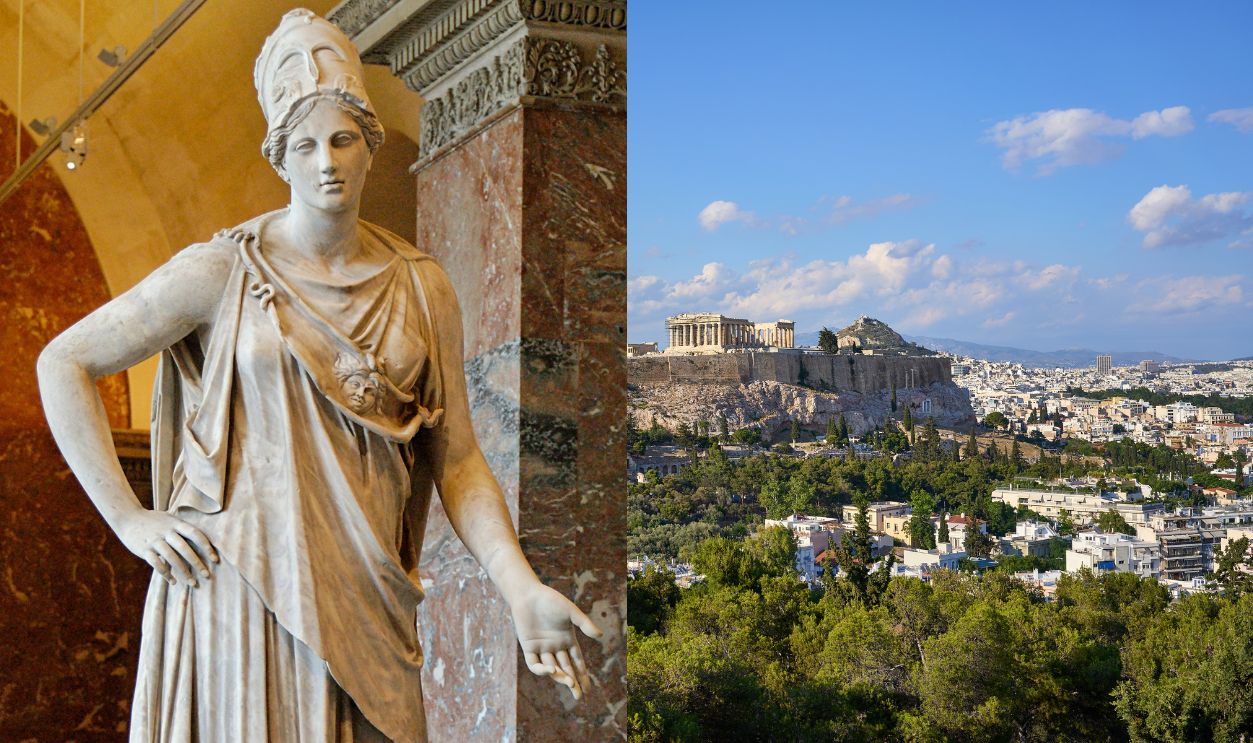 Jastrow and George E. Koronaios, CC BY-SA 4.0, Wikimedia Commons
Jastrow and George E. Koronaios, CC BY-SA 4.0, Wikimedia Commons
Byblos, Lebanon
Byblos, also known as Jbeil in Arabic, was established a little before 5,000 BCE by the seafaring Phoenicians, who transformed it into a vibrant port city on the Mediterranean coast. This ancient city was strategically located to facilitate trade, primarily in timber, with ancient Egypt and beyond.
 Orient, CC BY-SA 2.0 DE, Wikimedia Commons
Orient, CC BY-SA 2.0 DE, Wikimedia Commons
A True Melting Pot Of Cultures
The word Bible originates from Byblos, as early texts were written on the exported papyrus paper. Byblos has become a UNESCO World Heritage site thanks to its stunning blend of Phoenician, Roman, and Byzantine structures. The ancient harbor, the Crusader Castle, and numerous temples speak to its layered history.
 Darya Jukova, CC BY-SA 2.0, Wikimedia Commons
Darya Jukova, CC BY-SA 2.0, Wikimedia Commons
Samarkand, Uzbekistan
Known as Marakanda in ancient times, Samarkand is one of Central Asia's most enchanting cities. It dates back to around 700 BCE, then flourished under Alexander the Great, and later became one of the jewels of the Silk Road, connecting China, Europe, and the Middle East.
 Jaan Künnap, CC BY-SA 4.0, Wikimedia Commons
Jaan Künnap, CC BY-SA 4.0, Wikimedia Commons
The Capital Of The Timurid Empire
Samarkand reached its peak during the 14th and 15th centuries as the capital of Tamerlane's Timurid Empire, becoming a center for Islamic art, science, and architecture. Today, Samarkand is noted for its stunning Islamic monuments, including the iconic Registan Square, Shah-i-Zinda necropolis, and Bibi-Khanym Mosque.
 Bobyrr, CC BY-SA 4.0, Wikimedia Commons
Bobyrr, CC BY-SA 4.0, Wikimedia Commons
Axum, Ethiopia
Axum, or Aksum, in northern Ethiopia, is often considered the birthplace of Ethiopian civilization and is known for its massive stone obelisks, some of which date back over 1,700 years. The town goes back to the 1st century CE when it was the capital of the Aksumite Empire.
 JensiS65, CC BY-SA 3.0, Wikimedia Commons
JensiS65, CC BY-SA 3.0, Wikimedia Commons
A Prominent Religious Significance
The city has a unique place in religious history, as it is believed to be the home of the Ark of the Covenant in the Church of Our Lady Mary of Zion. Today, Axum has a population of around 94,000 and attracts visitors interested in Ethiopian history and spirituality.
 Jialiang Gao, CC BY-SA 3.0, Wikimedia Commons
Jialiang Gao, CC BY-SA 3.0, Wikimedia Commons
Varanasi, India
Many notable figures, including the poet Kabir, have lived in Varanasi. Also known as Benares or Kashi, Varanasi was established around 1,000 BCE along the banks of the Ganges River. According to Hindu mythology, it was founded by Shiva, and its holy status has attracted pilgrims for generations.
 Saaremees, CC BY-SA 4.0, Wikimedia Commons
Saaremees, CC BY-SA 4.0, Wikimedia Commons
The Heart of Hinduism
Millions visit Varanasi each year, and devotees seek blessings in the temples, ashrams, and riverfront steps of The Ganges River. The city's culture is deeply tied to Hinduism, and it remains an essential religious and cultural destination in India. It has been depicted in numerous Bollywood films.
 Vyacheslav Argenberg, CC BY 4.0, Wikimedia Commons
Vyacheslav Argenberg, CC BY 4.0, Wikimedia Commons
Luxor, Egypt
Originally known as Thebes, Luxor was established around 3,200 BCE and became a prominent center during Egypt's Middle and New Kingdom periods. It was chosen as a spiritual and political center, and its importance soared, especially with the construction of monumental temples like Karnak and Luxor Temple.
 Vyacheslav Argenberg, CC BY 4.0, Wikimedia Commons
Vyacheslav Argenberg, CC BY 4.0, Wikimedia Commons
An Open-Air Museum
The Valley of the Kings, located nearby, contains the tombs of many Ancient Egyptian kings, including the famous tomb of Tutankhamun. Luxor is known today as an open-air museum due to its vast number of ancient ruins and temples. The city attracts millions of tourists every year.
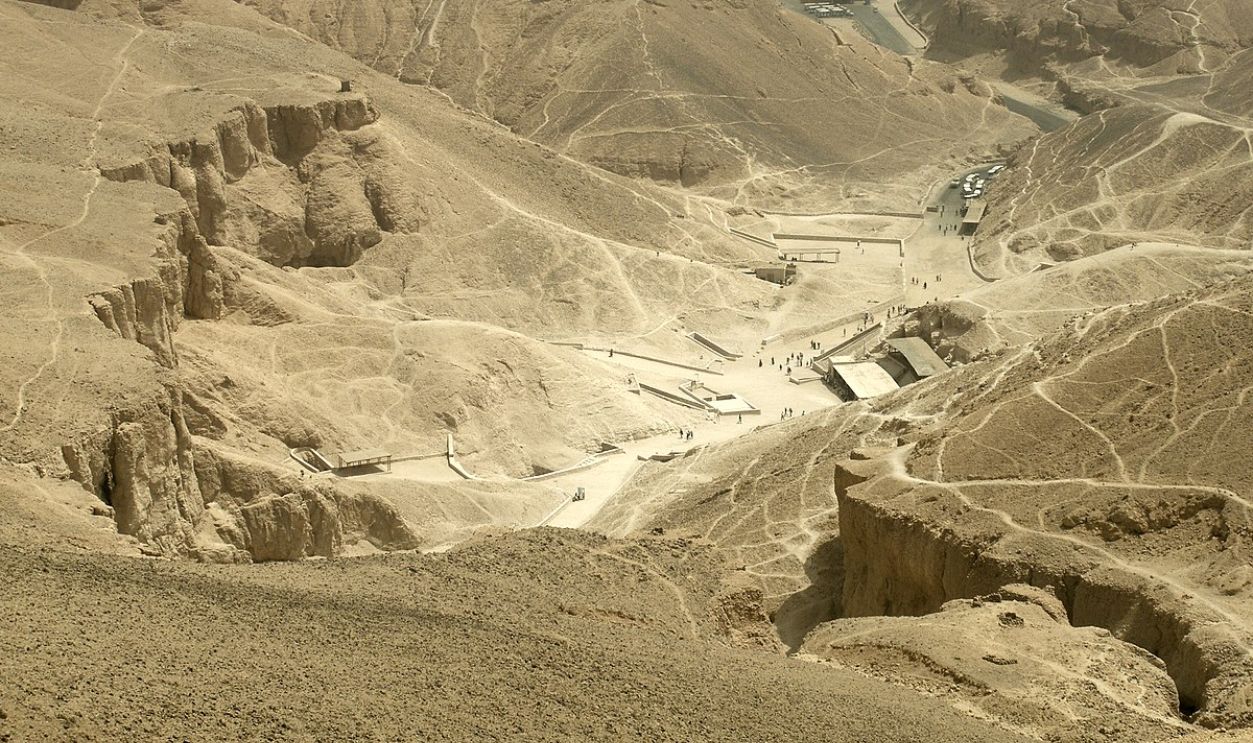 Vyacheslav Argenberg, CC BY 4.0, Wikimedia Commons
Vyacheslav Argenberg, CC BY 4.0, Wikimedia Commons
Tbilisi, Georgia
The capital of Georgia, Tbilisi, has roots dating back to the 5th century CE, although some archaeological evidence suggests it may have been inhabited even earlier. Originally known as Tiflis, the city was founded by King Vakhtang I Gorgasali after he discovered a hot spring in the area.
 Ggia, CC BY-SA 3.0, Wikimedia Commons
Ggia, CC BY-SA 3.0, Wikimedia Commons
Home To Multiple Architectural Styles
Tbilisi's strategic location along the Silk Road allowed it to flourish as a trade center. The city is dotted with stunning architecture, which blends medieval, Soviet, and modern styles, exemplified by the beautiful Metekhi Church and the iconic Tbilisi Bridge of Peace.
 Zysko serhii, CC BY-SA 4.0, Wikimedia Commons
Zysko serhii, CC BY-SA 4.0, Wikimedia Commons
Lisbon, Portugal
The Phoenicians founded Lisbon or Lisboa around 1,200 BCE as a port on the Atlantic Ocean. The city's name is derived from the Phoenician term Allis Ubbo, which means safe harbor. Lisbon has been a crossroads for various civilizations, including the Romans, Visigoths, and Moors, each leaving a mark.
 Deensel, CC BY 2.0, Wikimedia Commons
Deensel, CC BY 2.0, Wikimedia Commons
A Rich Past And Present
Lisbon's iconic landmarks include the Tower of Belém and Jerónimos Monastery, which represent the city's golden age of exploration. Vibrant neighborhoods, including Alfama and Bairro Alto, attract visitors who love to experience the traditional Fado music. Lisbon has also served as a backdrop for films like Lisbon Story.
 Alvesgaspar, CC BY-SA 3.0, Wikimedia Commons
Alvesgaspar, CC BY-SA 3.0, Wikimedia Commons
Aleppo, Syria
Aleppo or Halab rose as a prominent trade hub due to its position along the Silk Road, connecting ancient Mesopotamia to the Mediterranean. Built by early Semitic tribes and later by the Amorites and Assyrians, Aleppo became a fusion of cultures that was influenced by the Greeks, Romans, and Ottomans.
 Vyacheslav Argenberg, CC BY 4.0, Wikimedia Commons
Vyacheslav Argenberg, CC BY 4.0, Wikimedia Commons
A Powerful Symbol Of Resilience
The city's iconic Citadel of Aleppo, a massive fortified structure dating back to the 3rd millennium BCE, remains a powerful symbol of its history and resilience. With a current population of about 2 million, Aleppo is recognized for its resilient spirit, especially after enduring recent military conflict.
 Memorino, CC BY-SA 3.0, Wikimedia Commons
Memorino, CC BY-SA 3.0, Wikimedia Commons
Susa, Iran
Susa, or Shush in modern Iran, was established by the Elamite civilization, later becoming an administrative center under the Persian Empire. Located at the crossroads of Mesopotamia and the Iranian Plateau, Susa thrived as an economic powerhouse, with the Elamites choosing it for its prime position on trade routes.
 Blitz1980, CC BY-SA 3.0, Wikimedia Commons
Blitz1980, CC BY-SA 3.0, Wikimedia Commons
Home Of Queen Esther
One fascinating historical detail about Susa is that it's mentioned in the Bible as the setting of the story of Queen Esther, who became queen of Persia in this very city. The Tomb of Daniel, Apadana Palace, and remnants of the ancient citadel are among its most cherished landmarks.
 Ziegler175, CC BY-SA 4.0, Wikimedia Commons
Ziegler175, CC BY-SA 4.0, Wikimedia Commons
Flores, Guatemala
Home to the Maya Civilization, Flores (originally Noj Petén) is a picturesque island city in northern Guatemala that was built around 900 BCE. It served as the last stronghold of the Itza Maya and withstood Spanish conquest until 1697, which makes it one of the final bastions of the Maya civilization.
 Cecilia Schubert, CC BY 2.0, Wikimedia Commons
Cecilia Schubert, CC BY 2.0, Wikimedia Commons
The Last Stronghold
Today, Flores is a vibrant town with colorful colonial architecture and cobblestone streets, drawing visitors to explore its lively local markets and traditional crafts. The city is celebrated for its festive atmosphere, especially during Easter and Christmas, when traditional parades and ceremonies take place.
 Adam Jones, CC BY-SA 2.0 and Kaldari, CC0, Wikimedia Commons
Adam Jones, CC BY-SA 2.0 and Kaldari, CC0, Wikimedia Commons
Rome, Italy
Rome was established in 753 BCE, according to the famous legend, by the twins Romulus and Remus. Initially a small settlement, Rome grew into the heart of the Roman Empire. The city is characterized by its iconic historical landmarks, including the Colosseum, the Roman Forum, and the Pantheon.
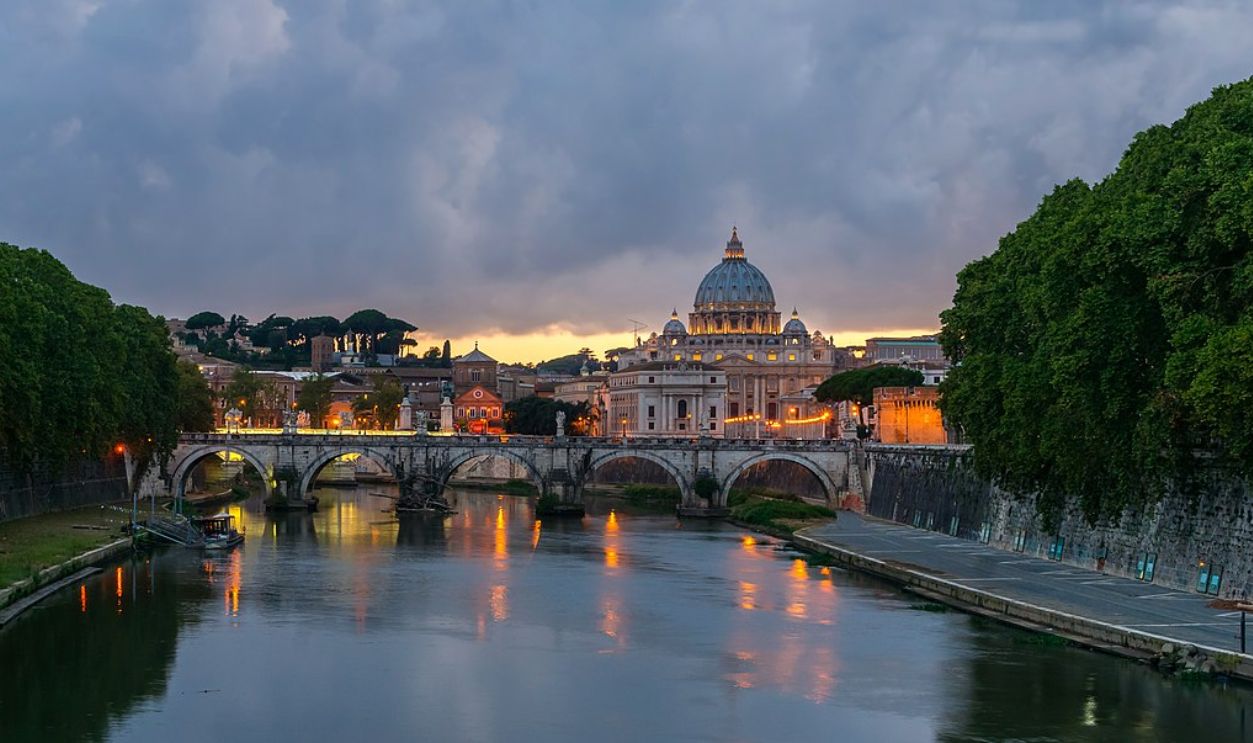 Jebulon, CC0, Wikimedia Commons
Jebulon, CC0, Wikimedia Commons
Heart Of The Roman Empire
With a modern population of about 4.2 million, Rome is celebrated for its rich cultural heritage, cuisine, art, and housing the Vatican City. The city's influence extends beyond history, having appeared in numerous films, including classics like Roman Holiday and more contemporary works like Gladiator.
 Diliff, CC BY-SA 3.0, Wikimedia Commons
Diliff, CC BY-SA 3.0, Wikimedia Commons
Istanbul, Turkey
With a current population of over 15 million, Istanbul is known for its vibrant markets, rich history, and cultural fusion of East and West. Historically known as Byzantium and later Constantinople, it was founded around 657 BCE and has served as a hub for various civilizations throughout history.
 Istanbul Tipps - Picture by Selda Yildiz and Erol Gülsen ., CC BY-SA 3.0 DE, Wikimedia Commons
Istanbul Tipps - Picture by Selda Yildiz and Erol Gülsen ., CC BY-SA 3.0 DE, Wikimedia Commons
A Unique Mix Of Traditions
Established by the Greeks, it became the capital of the Byzantine Empire in 330 CE under Emperor Constantine the Great, who renamed it Constantinople. Notable figures like the philosopher Rumi and the poet Orhan Pamuk were inspired by the city's unique blend of traditions.
 Hunanuk, CC0, Wikimedia Commons
Hunanuk, CC0, Wikimedia Commons
Fez, Morocco
Fez was established around 789 CE by Idris I and has been a vital cultural and spiritual center in Morocco for centuries. The city's medina, which is a UNESCO World Heritage site, is amongst the largest car-free urban areas in the world, preserving the essence of medieval Islamic architecture.
 Petar Milošević, CC BY-SA 4.0, Wikimedia Commons
Petar Milošević, CC BY-SA 4.0, Wikimedia Commons
One Of The Oldest Universities In The World
The city is particularly famous for its ancient universities, including the University of Al Quaraouiyine, which is regarded as the oldest existing degree-granting university in the world. Fez is famous for its traditional crafts, including pottery and leatherwork, and the historic tanneries offer a glimpse into its artisanal heritage.
 Momed.salhi, Wikimedia Commons
Momed.salhi, Wikimedia Commons
Xi'an, China
Xi'an, once known as Chang'an, has been inhabited since around 2,000 BCE and served as the eastern terminus of the Silk Road. The city became the capital for multiple Chinese dynasties, including the Qin, which unified China under Emperor Qin Shi Huang.
 Maros M r a z (Maros), CC BY-SA 3.0, Wikimedia Commons
Maros M r a z (Maros), CC BY-SA 3.0, Wikimedia Commons
The Terracotta Army
The city's main historical significance is the Terracotta Army, where thousands of clay soldiers are buried with the first emperor to protect him in the afterlife. Today, Xi'an is a vibrant city that preserves its rich cultural heritage, attracting millions of visitors each year.
 xiquinhosilva, CC BY 2.0, Wikimedia Commons
xiquinhosilva, CC BY 2.0, Wikimedia Commons
Plovdiv, Bulgaria
With origins dating back to around 6,000 BCE, Plovdiv is one of Europe's oldest continuously inhabited cities. Known as Philippopolis under Macedonian rule, it was established by the Thracians and later became a Roman stronghold.
 Ilia Markov from Sofia, Bulgaria, CC BY-SA 2.0, Wikimedia Commons
Ilia Markov from Sofia, Bulgaria, CC BY-SA 2.0, Wikimedia Commons
The Center Of The Balkans
Plodive is famous for its Roman ruins, including the well-preserved ancient theater and stadium. Today, it's a cultural center in the Balkans and the cultural capital of Bulgaria. The city has been featured in historical documentaries and is known for hosting the annual International Fair Plovdiv.
 VladislavNedelev, CC BY-SA 3.0, Wikimedia Commons
VladislavNedelev, CC BY-SA 3.0, Wikimedia Commons
Benghazi, Libya
Benghazi dates back to around the 6th century BCE when it was established by the Greeks as Euesperides. It later became an essential hub of the Roman Empire and subsequently part of the Arab world, flourishing under each successive rule.
 Dennixo, CC BY-SA 3.0, Wikimedia Commons
Dennixo, CC BY-SA 3.0, Wikimedia Commons
A Strategic Mediterranean Port
Known for its strategic Mediterranean location, Benghazi served as a critical center of commerce and culture in North Africa. Today, with a population of over 1 million, Benghazi stands strong despite the turmoil and conflict that have affected the region in recent years.
 Maher A. A. Abdussalam, Wikimedia Commons
Maher A. A. Abdussalam, Wikimedia Commons
Izamal, Mexico
The Yellow City is famous for its brightly painted buildings. This is a historic city in Mexico's Yucatán Peninsula with origins that trace back to the Maya civilization. Founded around the 6th century CE, Izamal was initially a religious center dedicated to the Maya sun god, Kinich Kakmó.
Mixing Mexican and Spanish Heritages
After the Spanish conquest, the city was transformed with colonial architecture, like the massive Convento de San Antonio de Padua. It was built on top of a Maya pyramid and is one of the largest monastic structures in the Americas. Today, Izamal is celebrated for its Maya and Spanish heritages.
 Patrickrichaud, CC BY-SA 4.0, Wikimedia Commons
Patrickrichaud, CC BY-SA 4.0, Wikimedia Commons
Erbil, Iraq
Erbil's history stretches back over 6,000 years. Today, it's the capital of the Kurdistan Region of Iraq, and its most iconic landmark is the Erbil Citadel, a fortified settlement on a hill that has seen many civilizations, from the Assyrians and Sumerians to the Persians and Ottomans.
 jan kurdistani, CC BY-SA 2.0, Wikimedia Commons
jan kurdistani, CC BY-SA 2.0, Wikimedia Commons
Connecting Ancient Mesopotamia With The Levant
Also known as Arbil or Hawler, the city served as a vital crossroads on trade routes linking Mesopotamia with the Levant. Today, Erbil has developed into a bustling city known for its vibrant Kurdish culture, traditional bazaars, and lively food scene.
 Osama Shukir Muhammed Amin FRCP(Glasg), CC BY-SA 4.0, Wikimedia Commons
Osama Shukir Muhammed Amin FRCP(Glasg), CC BY-SA 4.0, Wikimedia Commons
Yerevan, Armenia
The capital of Armenia, Yerevan, is one of the oldest cities in the world, as it was founded in 782 BCE by King Argishti I of Urartu, who named it Erebuni. Yerevan predates Rome by 30 years and has served as a cultural and political center of Armenia ever since.
 Սէրուժ Ուրիշեան (Serouj Ourishian), CC BY-SA 3.0, Wikimedia Commons
Սէրուժ Ուրիշեան (Serouj Ourishian), CC BY-SA 3.0, Wikimedia Commons
The Pink City
Known as the Pink City due to the pink-hued volcanic tuff used in its buildings, Yerevan has a unique charm with Soviet and modern architecture, wide boulevards, and a thriving arts scene. The Republic Square, the Cascade Complex, and the ancient Erebuni Fortress highlight Yerevan's historical and architectural significance.
 Nina Stössinger, CC BY-SA 2.0, Wikimedia Commons
Nina Stössinger, CC BY-SA 2.0, Wikimedia Commons
Multan, Pakistan
Multan, or the City of Saints or Madinat-ul-Awliya, is one of Pakistan's oldest cities, with a history dating back over 5,000 years to the ancient Indus Valley Civilization. Located in the Punjab province, Multan became a significant center of commerce, culture, and Sufism.
 Mubashirtaqi147, CC BY-SA 3.0, Wikimedia Commons
Mubashirtaqi147, CC BY-SA 3.0, Wikimedia Commons
Heart Of The Sufi Culture
Several shrines and tombs of revered Sufi saints, such as Shah Rukn-e-Alam, with their intricate tile work and grand domes, attract thousands of pilgrims. Today, Multan has a unique spiritual aura and is a hub of Sufi culture. It's also known for its contributions to traditional pottery, carpets, and embroidered textiles.
 Yaarahmadd, CC BY-SA 4.0, Wikimedia Commons
Yaarahmadd, CC BY-SA 4.0, Wikimedia Commons

